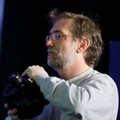(Subscribe to this discussion)
It is a requirement of high quality digital audio systems that all digital interfaces in the signal path exhibit signal transparency. The widely adopted AES/EBU/SPDIF interface has received criticism from some quarters for a lack of signal transparency; this paper addresses possible problems with such interfaces and presents methods for improving the interface standard.
Authors:
Dunn, Chris; Hawksford, Malcolm J.
Affiliation:
Audio Research Group, Department of Electronic Systems Engineering, University of Essex, Wivenhoe Park, Colchester, UK
AES Convention:
93 (October 1992)
Paper Number:
3360
Publication Date:
October 1, 1992
Subject:
Interfacing Digital Equipment
Click to purchase paper as a non-member or you can login as an AES member to see more options.
 Scott Dorsey |
Comment posted May 14, 2020 @ 19:39:30 UTC
(Comment permalink)
The premise behind this paper is that jitter on the incoming clock is directly translated into jitter on the clock operating a D/A converter, and it shows where many of the jitter problems on the S-PDIF and AES/EBU interface come from. Namely, the recovery of the embedded clock is a real problem. What this paper doesn't do is provide the simple and easy answer of buffering and derived clocks which has become universal today. But it was one of the first to show that there was a need for such a thing. This paper may seem less than clear to young people who have grown up in a world where computer memory is cheap and buffering is easy and very few things are built entirely with blocks of combinational logic, but it is a view into a different world where clocks were more tightly coupled. Unfortunately some people in the high end audio community cite this paper as an indication that these problems still exist in modern systems. We have come a long way since 1992 and Dr. Hawksford helped carry us there. (Respond to this comment)
|
![]() To be notified of new comments on this paper you can
subscribe to this RSS feed.
Forum users should login to see additional options.
To be notified of new comments on this paper you can
subscribe to this RSS feed.
Forum users should login to see additional options.
If you are not yet an AES member and have something important to say about this paper then we urge you to join the AES today and make your voice heard. You can join online today by clicking here.
